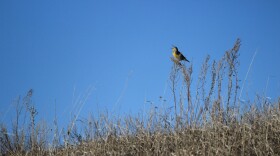Poison ivy occasionally comes up in conversation. The conversation is generally on how to identify this infamous plant. Perhaps a little refresher on identification might be helpful.
Poison ivy has been documented in all but a few counties in North Dakota. And it is very likely it is in all the other counties as well, but just has not been collected.
It might surprise some of you, but poison ivy is a shrub in our region. It grows to between one and two feet tall. It is rhizomatous, and as a result often grows in patches, sometimes quite thick. It grows upright and unlike most shrubs we are familiar with, poison ivy produces few branches. Looking at the plant, one may not identify it as a shrub, but the woody growth is often apparent near the base of the plant.
Many of you have certainly heard the saying “leaves in three, let it be.” That is good advice. The leaves of poison ivy are alternate on the stem and grow near the tip of a branch. The leaf stalk or petiole is long and produces three shiny leaflets which are about as long as wide. The margins of the leaves are often entire, but some are coarsely toothed. Earlier in the growing season the leaves are maybe two inches or so in length but become larger as the growing season progresses. The leaves often droop, which can be a helpful characteristic in identification. And the leaves can occasionally have a reddish tinge, or what some people will call a “bronzy” color to parts of the leaves.
The plant produces rather inconspicuous flower clusters (June) and subsequently persistent fruit which is a pale yellowish color with a tint of green. They are about a quarter of an inch in diameter and resemble the fruits of buckbrush, also known as western snowberry.
Simply touching the leaves may result in blistering, but the time from exposure to blistering can be quite variable. The active agent is urushiol, and because it is an oil and is not soluble in water. Flushing the exposed area with water does not work. Based on my experiences, Tecnu (trademark name) is a product that is quite effective on skin as well as clothing and other items contaminated with poison ivy oils.
There is much to see and do outdoors this time of year, but please watch out for poison ivy.






